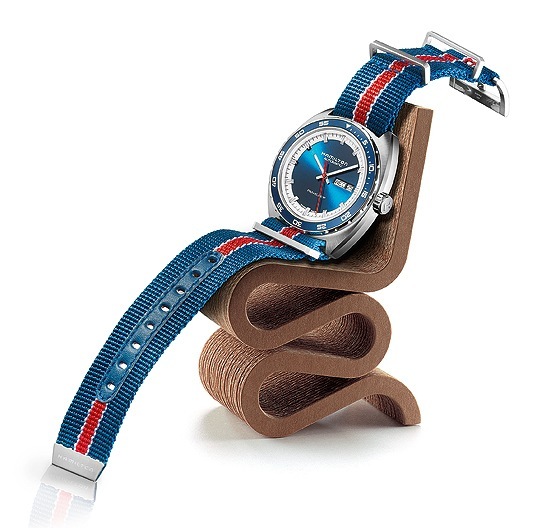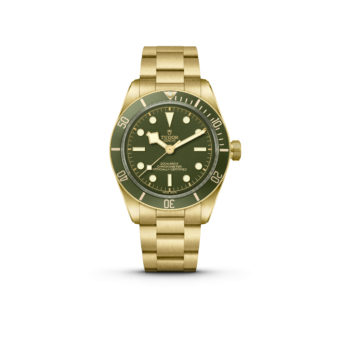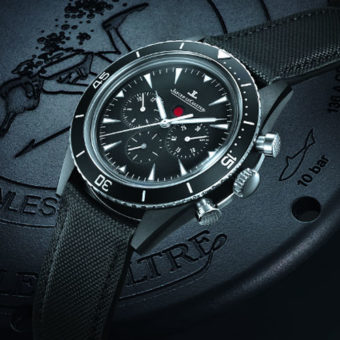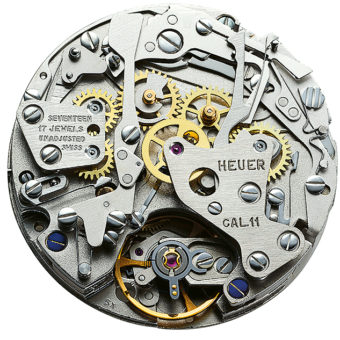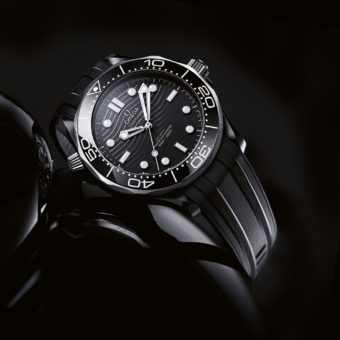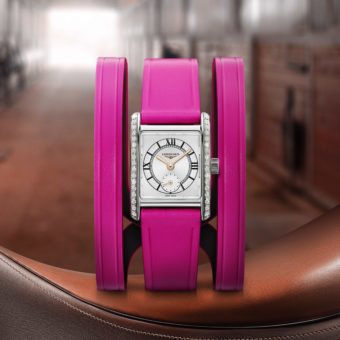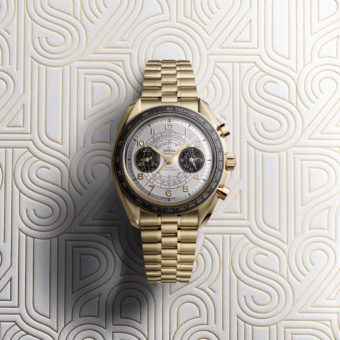For WatchTime’s Special Design Issue — on newsstands now and also available in the WatchTime online shop — we showcase six retro-designed watches, sitting pretty on miniature retro chairs. Scroll down to discover the timepieces and admire the original photos by WatchTime’s Nik Schölzel.
CHOPARD MILLE MIGLIA 2014
This Mille Miglia watch from Chopard gets comfortable on a miniature model of the LCW chair from 1945 by Charles and Ray Eames. The watch’s design can also be traced to the 1940s. The model name refers to the famous 1,000-mile vintage-car race across Italy that was held between 1927 and 1957 and was revived in 1977. Chopard has sponsored the rally since 1988. A new Mille Miglia watch is unveiled each year at the time of the race. Most are chronographs, like this 42-mm stainless-steel model powered by a chronometer-certified ETA 2894 movement. (Click on all photos for a larger image.)

TUDOR HERITAGE RANGER
The inspiration for the 2014 Tudor Ranger appeared in 1967, four years after the Laminated Chair by Grete Jalk. In contrast to this playful-looking piece of furniture, the Ranger’s design is based on functionality without excessive details. The case is 41 mm in diameter. The movement is the ETA 2824.

OMEGA SPEEDMASTER MARK II
The Speedmaster Mark II doesn’t belong to the pop art world like the La Mamma chair by Gaetano Pesce, but it was born in the same year: Omega launched the model in 1969 as a contemporary timepiece for daily wear, one that also could meet professional demands. In 2014, 45 years later, Omega relaunched the Mark II. The new watch also has a date, luminous material on the tachymeter track and an even better movement in the form of a greatly modified ETA 7750. The design remained virtually unchanged.

LONGINES HERITAGE 1935
Although it sits on the Standard Chair by Jean Prouvé from 1934, this pilots’ watch isn’t standard watch fare. The square cushion-shaped case with round fluted bezel looks as handsome as it did in 1935. Longines developed the watch for the Czech air force and offered it a short time later to civilians. Today it would no longer meet military standards since the once-rotating bezel is now fixed on the 42-mm stainless-steel case, thus taking away the timing function. But thanks to the ETA 2895, it now has an automatic winding mechanism and a date.

JAEGER-LECOULTRE GRANDE REVERSO ULTRA-THIN 1931
The new rectangular Reverso, with a dial design from 1931, the year the Reverso was launched, couldn’t find a better accommodation than Gerrit Rietveld’s Zig Zag chair from 1934. The brown dial of the reversible watch matches the color of the cordovan leather strap. The strap is made by the polo boot manufacturer Casa Fagliano, another nod to the origin of the Reverso as a polo watch. Back when watch crystals were less durable than they are now, polo players flipped the fragile front around to face the wrist during play. The in-house manual Caliber 822 ticks within the iconic rose-gold case, which has grown to 27.4 mm by 46.8 mm.

HAMILTON PAN-EUROP DAY-DATE
The watch sitting atop the Wiggle Side Chair by Frank Gehry from 1972 is descended from a chronograph: the original Pan-Europ, launched in 1971, contained Caliber 11, one of the world’s first automatic chronograph movements. The newest Pan-Europ model shows the date and the day of the week, but still retains the design codes of the original. The 45-mm stainless-steel case houses the Caliber H-30, a modified ETA 2836, with a new escapement and an impressive power reserve of 80 hours.
